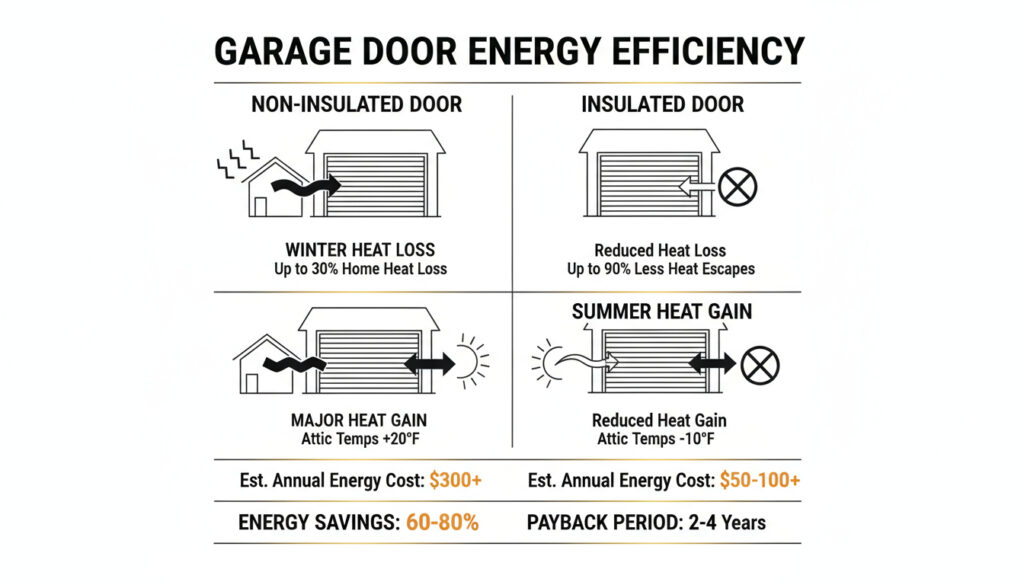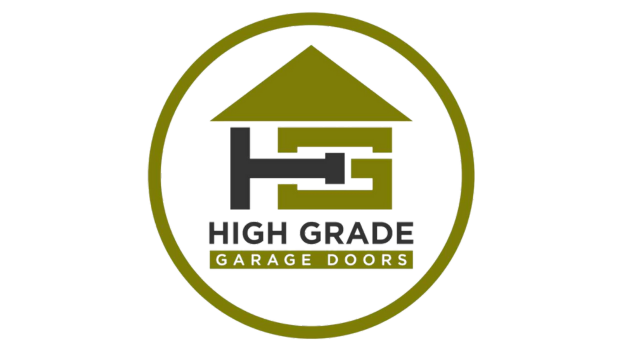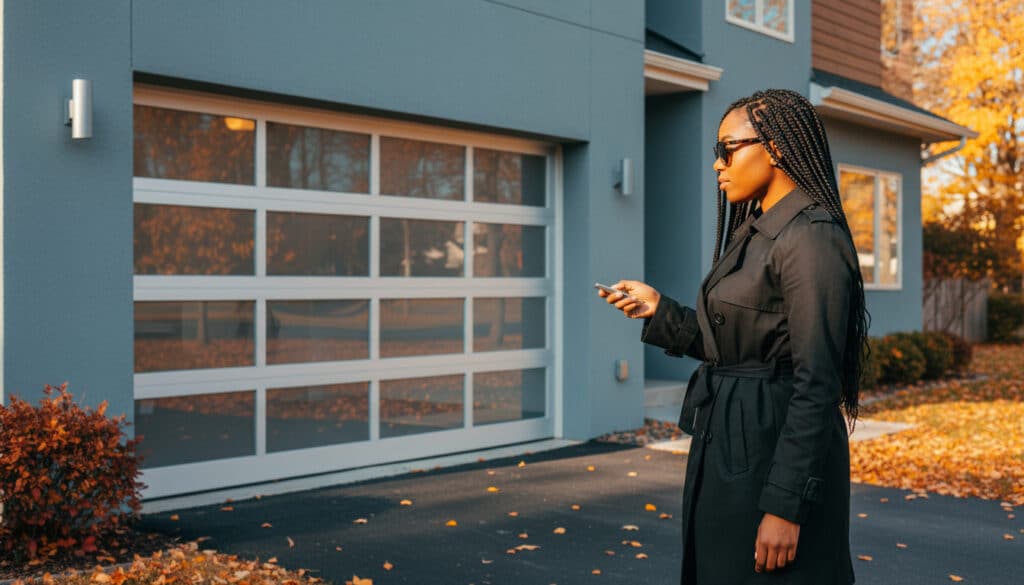
Insulated garage doors provide better energy efficiency and noise reduction compared to non-insulated ones, making them ideal for Peoria’s hot climate where temperature control is crucial. Understanding the differences helps homeowners make informed decisions that enhance comfort, save on energy bills, and increase property value.
Understanding Garage Door Insulation Basics
Garage doors play a vital role in your home’s security, aesthetics, and energy efficiency, especially in a city like Peoria, Arizona, where extreme heat can turn your garage into an oven. Insulation refers to the materials added to the door’s panels, typically polyurethane or polystyrene foam, which create a barrier against heat transfer. This section breaks down the core differences to help you solve common problems like high energy costs or uncomfortable garage spaces.
Non-insulated garage doors are basic single-layer steel or aluminum constructions without any added foam or barriers. They’re lightweight and straightforward, often chosen for their affordability. In contrast, insulated doors feature multiple layers with insulation sandwiched between them, offering superior thermal resistance measured by R-value—a key metric for how well the door resists heat flow. For Peoria homeowners dealing with summer temperatures exceeding 100°F, a higher R-value means less heat seeping into your home, potentially reducing air conditioning demands by up to 20% according to general energy efficiency studies.
If you’re experiencing drafts, uneven home temperatures, or noisy garage operations, insulation could be the missing piece. By addressing these issues early, you prevent minor annoyances from escalating into costly repairs, such as warped doors from heat exposure.
Types of Insulation Materials
Polyurethane insulation is injected as a foam that expands to fill the door’s panels, providing high R-values (often 12-18) and added structural strength. It’s excellent for Peoria’s variable weather, where monsoon seasons bring humidity that could otherwise lead to rust or mold in non-insulated doors.
Polystyrene, a more budget-friendly option, comes in rigid panels with R-values around 6-10. While effective, it’s less dense than polyurethane, making it suitable for milder insulation needs. Homeowners facing budget constraints but still wanting some protection against Peoria’s desert heat might start here to solve immediate energy loss problems without overspending.
Benefits of Insulated Garage Doors for Peoria Homes
Insulated garage doors offer multiple advantages tailored to Peoria’s unique climate and lifestyle, helping solve everyday challenges like energy waste and discomfort. One primary benefit is enhanced energy efficiency. In a region with intense sunlight and high temperatures, these doors act as a thermal barrier, keeping your garage cooler in summer and warmer during occasional cool winters. This can lower your utility bills significantly—homeowners often report savings of 10-15% on cooling costs by minimizing heat gain through the garage, which is typically the largest uninsulated opening in a home.
Noise reduction is another key problem-solver. If you live near busy Peoria roads like Bell Road or in subdivisions with frequent traffic, insulated doors dampen external sounds, creating a quieter indoor environment. The added layers absorb vibrations, making them ideal for attached garages where noise could disturb living spaces.
Durability stands out as well. Peoria’s dry, dusty conditions can accelerate wear on non-insulated doors, leading to dents, fading, or operational failures. Insulated models are more robust, resisting impacts and weather-related damage, which extends their lifespan to 20-30 years with proper care. This solves the problem of frequent replacements, saving time and money in the long run.
Additionally, insulated doors can boost your home’s resale value. In Peoria’s competitive real estate market, energy-efficient features are highly sought after. A well-insulated garage door signals to buyers that the home is modern and cost-effective to maintain, potentially increasing property values by 1-2% based on local market trends.
Energy Savings in Peoria’s Climate
Peoria’s hot, arid climate amplifies the need for insulation. Without it, your garage can heat up like a sauna, forcing your HVAC system to work overtime. Insulated doors with high R-values counteract this by reflecting radiant heat, keeping interior temperatures stable. For instance, if your garage doubles as a workshop or storage area, insulation prevents heat damage to tools, vehicles, or stored items, solving storage-related problems common in desert environments.
Homeowners often overlook how garage heat affects the entire house. By choosing insulated doors, you create a buffer zone that reduces the load on your air conditioner, leading to fewer breakdowns and lower repair costs.
Advantages of Non-Insulated Garage Doors
While insulated options excel in efficiency, non-insulated garage doors have their place, particularly for budget-conscious Peoria residents or those with detached garages. Their main appeal is affordability—costing 20-50% less upfront than insulated counterparts, they provide a quick solution for basic needs like security and curb appeal without unnecessary extras.
These doors are lighter, making them easier to operate manually if your opener fails, which is a practical fix for emergency situations. In Peoria’s milder winter months, where extreme cold isn’t a concern, the lack of insulation doesn’t significantly impact energy use, allowing homeowners to allocate savings elsewhere, such as landscaping or home improvements.
Non-insulated doors also offer simpler maintenance. With fewer layers, they’re less prone to issues like foam degradation over time. If your garage is used primarily for parking and not as an extension of living space, this type solves the problem of over-investing in features you won’t fully utilize.
When Non-Insulated Doors Make Sense
For Peoria homeowners with detached garages or those in shaded areas less affected by direct sun, non-insulated doors provide adequate protection against dust and pests without the added cost. They’re a straightforward choice for short-term rentals or starter homes, addressing immediate security needs efficiently.
Key Factors to Consider When Choosing
Selecting between insulated and non-insulated garage doors requires evaluating your specific situation in Peoria. Climate is paramount— with average highs of 106°F in July, insulation helps combat heat buildup, but if your garage is well-ventilated or rarely used, non-insulated might suffice.
Consider usage: If your garage serves as a home gym, office, or play area, insulation solves temperature and noise issues. Budget plays a role too; insulated doors range from $800-$2,500 installed, while non-insulated start at $500-$1,200. Factor in long-term savings—insulation pays for itself through energy reductions within 3-5 years.
Home style and aesthetics matter. Both types come in various designs, from modern steel to classic wood-look, ensuring they match Peoria’s diverse neighborhoods like Vistancia or Arrowhead Ranch.
Cost Comparison and ROI
A detailed cost breakdown reveals insulated doors’ value. Initial investment is higher, but ROI comes from energy savings—expect $100-200 annual reductions in utility bills. Non-insulated doors have lower upfront costs but may lead to higher ongoing expenses in cooling. In Peoria, where energy rates are rising, this comparison helps homeowners calculate break-even points based on their usage.
Common Problems and Solutions
Peoria homeowners often face issues like garage condensation, high energy bills, or door warping. Insulated doors solve condensation by maintaining even temperatures, preventing moisture buildup that leads to mold. For energy bills, their thermal barrier directly reduces AC runtime.
Non-insulated doors can address basic security problems affordably, but pairing them with weatherstripping solves minor drafts. Regular inspections prevent warping—clean tracks and lubricate hinges biannually to extend life.
If noise from Loop 101 traffic bothers you, insulated doors with soundproofing foam are a targeted fix. For dust infiltration, common in Peoria’s windy seasons, both types benefit from seals, but insulated models offer better overall protection.
Maintenance Tips for Longevity
Proper care ensures your garage door lasts, regardless of type. For insulated doors, check seals annually to maintain R-value efficiency. Clean panels with mild soap to remove desert dust, and inspect for foam damage.
Non-insulated doors require similar upkeep: Balance tests every six months prevent operational strain. In Peoria’s dry air, apply rust inhibitors to metal parts. Professional tune-ups solve emerging problems early, avoiding costly emergencies.
Making the Right Choice for Your Peoria Home
Ultimately, insulated garage doors are recommended for most Peoria homeowners due to their energy savings and durability in our hot climate, while non-insulated suit budget-focused or minimal-use scenarios. Assess your needs— if energy efficiency and comfort are priorities, go insulated; for simplicity, non-insulated works.
For expert advice and installation, contact High Grade Garage Doors at (602) 837-1888. Our team specializes in helping Peoria residents choose and maintain the perfect garage door solutions.


